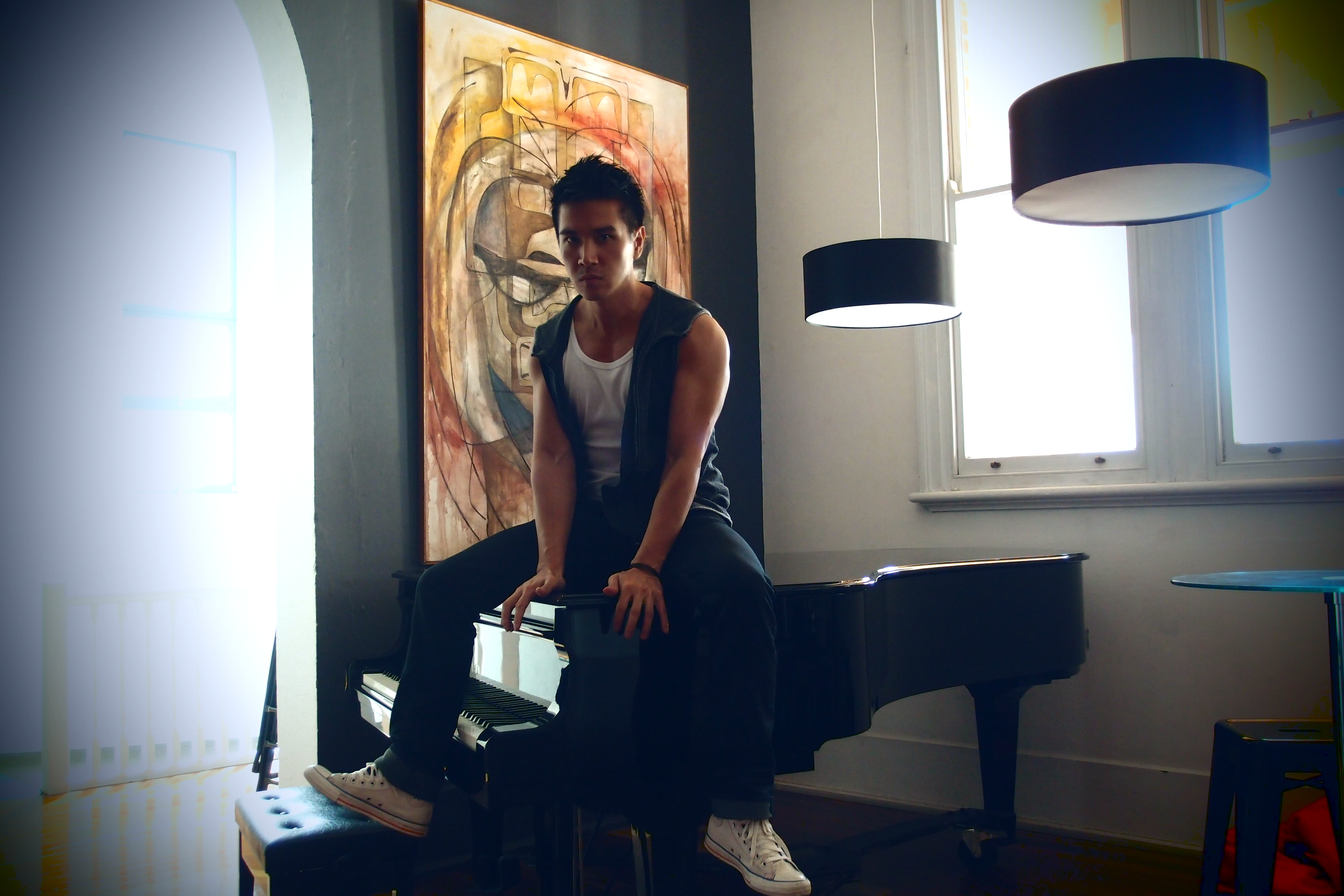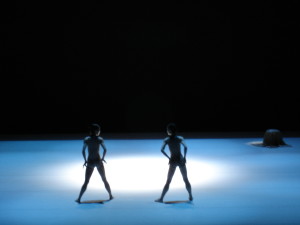January 6, 2006
NINA is the first work of the second season by Noism, joined by another four new members. It’s an electrifying work, focusing on the the body. The music was created by Vietnamese composer Tôn Thât An.
The big stage settings that were seen in the last season’s productions disappeared. The stage setting of this work is quite simple with just a few objets d’art. Lighting and music give variety to the ambience. As soon as the stage darkens, percussion instruments sound loudly, followed by overlapping breathing sounds. In the dim light appear whitish human figures and men in black. When they perform a pas de deux, the men lift and rotate the women who are move as stiffly as wooden dolls. It is a one-sided approach. The women’s state as wooden dolls does not change even after the men disappear behind the black curtain.
On the stage, audiences occasionally hear the mixture of breathing sounds and collaged incantation-like voices. The men appear and disappear with fluid movements and manipulate the immobilised women repeatedly and insistently. Whether when dancers face each others or when they stand behind the women and walk them slowly to the front of the stage, no communication can be felt.
Apparently it is a sketch of the men who, being the dominators, mechanically manipulate the women, the dominated. What is more, there is a dynamics of the group. The women’s bodies that patiently submit to the inhuman treatment gradually change into strong bodies. It seems to convey a message that the bodies are restricted and that only the trained bodies can survive, or, in other words, that the bodies for dance can reach perfection only when they receive forceful inhuman training.
In the second half of NINA, the relationship between the men and the women who seem to have unified begins to alter. When the dancers wearing tutus in vivid yellow and orange colours dance in the air with ballet inspired movements, the stage and the mood light up for a moment. Then a rebellion started by a woman gradually spreads to the rest of the performers. The men who had been wearing black until then begin to expose their true bodies and show sign of assimilation into the women. In one scene, as the electronic and mechanical sound morph into a more organic music, the male and female dancers cuddle up to each other, looking like Adam and Eve, which is a refreshing surprise, along with the final scene where all ten performers dance fluidly towards the end. The epilogue is even more impressive: the first man in black reappears. After a quick black-out, the woman is turned into a statue. By cutting off decorativeness and addressing the body itself, Jo Kanamori has presented a direction of his dance. NINA proves, in every detail, his sense of beauty and results in a forceful and compelling performance.
Megumi Ikeno

